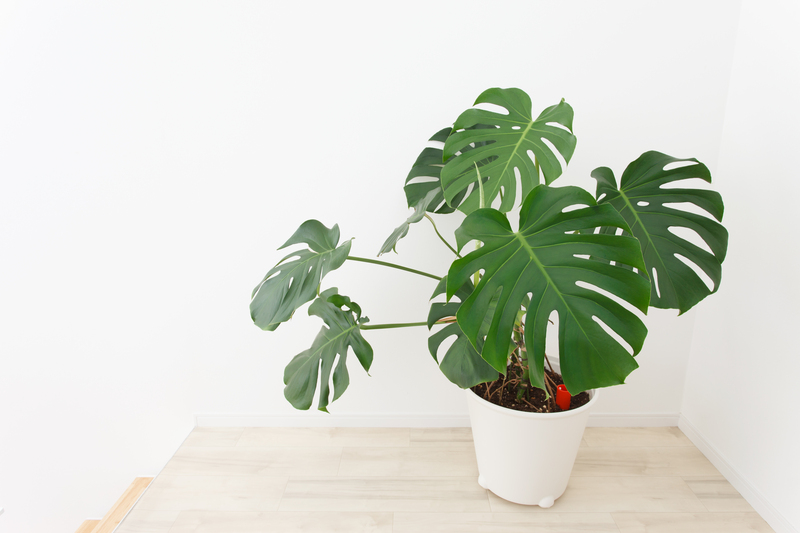Winter Plant Care: Ensuring Garden Safety
Posted on 08/06/2025
Winter Plant Care: Ensuring Garden Safety
Winter can be a challenging season for gardeners and plants alike. Frigid temperatures, heavy snow, icy winds, and fluctuating weather conditions put pressure on every living thing in your garden. With proper winter plant care, you can ensure not only the survival of your plants but also the safety and health of your entire garden ecosystem. In this comprehensive guide, you'll find practical strategies, expert advice, and insightful tips for garden safety throughout winter.
Understanding the Challenges of Winter for Gardens
Cold weather brings about unique dangers that require your attention. As a gardener, it's important to anticipate these risks and act proactively. Common winter threats include:
- Frost and Freeze Damage: Sudden temperature drops can harm sensitive stems, buds, and roots.
- Soil Compaction: Heavy snow and rainfall can lead to dense, unbreathable soil, impeding root growth.
- Desiccation (Drying Out): Cold winds strip moisture from leaves and branches, especially evergreens.
- Snow and Ice Weight: Accumulated snow or ice can snap branches or crush delicate plants.
- Pests and Diseases: Some pests overwinter in soil or plant debris, while dampness can foster fungal growth.
Addressing these challenges is the essence of good winter garden safety and holistic winter plant protection.

Preparing Your Plants for Winter
Assess the Health of Your Garden
Before winter sets in, walk through your garden and look for signs of disease, pest infestation, or structural weakness in plants. Remove affected leaves or branches and treat pest problems to minimize sources of stress as plants enter dormancy.
Mulching for Insulation
One of the best winter care for outdoor plants techniques is proper mulching. Apply a generous layer of organic mulch like straw, shredded bark, or compost around the base of your plants. Here's why mulching is critical:
- Maintains soil temperature stability, preventing freeze-thaw cycles that can damage roots.
- Helps soil retain moisture during dry winter spells.
- Reduces soil compaction from heavy snow.
- Suppresses weed growth that might emerge with mild spells.
Pruning and Cleaning
Late autumn is the perfect time to prune perennials and remove spent annuals. Trimming dead or diseased branches improves air circulation and reduces places for pests to overwinter. However, avoid heavy pruning in late fall, as it may encourage new growth that is vulnerable to frost.
Protecting Outdoor Plants from Frost and Freeze
Using Row Covers and Cloches
For tender perennials and young shrubs, temporary covers work wonders. Employ:
- Row covers - Lightweight fabric that shields plants from freezing air while allowing light and moisture through.
- Cloche - Bell-shaped glass or plastic covers for individual plants, ideal for vegetable gardens.
Apply these covers in late afternoon before a predicted frost, and remove them in the morning once temperatures rise, to avoid overheating.
Watering Wisely in Winter
Many gardeners overlook the importance of winter watering. Water evaporates more slowly in cold weather, but *evergreens and newly planted shrubs especially need moisture to survive winter desiccation*. Water deeply during dry spells, making sure soil is moist -- but not waterlogged -- before hard freezes set in. Always water early in the day so excess moisture can drain before nightfall.
Winter Plant Care for Different Plant Types
Evergreens
Evergreen shrubs and trees are vulnerable to both water loss and snow load damage. For optimal safety and healthy winter plant care, try the following:
- Wrap plants with burlap to shield from harsh winter winds, especially in exposed locations.
- Gently brush off heavy snow as soon as you notice accumulation to prevent branch breakage.
- Water deeply during warm spells when the soil is not frozen.
Deciduous Trees and Shrubs
After shedding leaves, deciduous plants enter dormancy. Protect their roots with a mulch blanket and wrap young tree trunks with guards to prevent cracking or animal damage (such as gnawing by rabbits or voles).
Perennials
Cut back perennials only after the first hard frost, leaving several inches of stem above ground. This protects the plant crown and provides food for beneficial insects. Cover with loose mulch or evergreen boughs for added insulation.
Container Plants
Potted plants are at risk for *root freezing*, since above-ground containers have less insulated soil. For best winter plant safety:
- Group containers together and place them in sheltered locations, such as against house walls or in a cold frame.
- Wrap pots with insulating material like bubble wrap or hessian.
- Lift containers off the ground with pot feet to prevent waterlogging and freezing.
Pathways, Tools, and Garden Structures: Safety First
Safe Pathways
Icy paths are a common hazard in winter gardens. To minimize slips:
- Keep walkways clear of snow and ice using sand or gravel instead of salt, which can damage plants and soil.
- Use non-slip mats or stepping stones where appropriate.
- Trim overhanging branches that might break and obstruct paths after heavy snow.
Tool and Equipment Management
Proper storage extends the lifespan of tools and reduces garden accidents. Clean, oil, and store all gardening tools in a dry, protected space. Check that structures like trellises and fences are sturdy - winter storms can cause unexpected damage if supports are weak or unstable.
Pest and Disease Management During Winter
An often-overlooked aspect of winter plant care is limiting pest and disease opportunities:
- Clear away fallen leaves, fruit, and plant debris to prevent overwintering sites for insects and fungi.
- Inspect plants intermittently for any signs of rodent activity or fungal growth on branches.
- Consider using natural deterrents like wire mesh around vulnerable plants or employing beneficial nematodes in soil to reduce pest populations.
Soil Health and Preparation for Spring
Soil Protection
Healthy soil is the bedrock of successful gardening, especially after a tough winter. In late winter or early spring, test soil for compaction and nutrient levels. Avoid walking on frozen or waterlogged beds to prevent further compaction.
'Winterizing' Compost
If composting, keep the pile insulated with leaves or straw, and turn it periodically so it doesn't become anaerobic. Well-fed compost teas in late winter prepare soil microbes for renewed spring growth.
Eco-Friendly Winter Garden Care
Sustainable garden practices protect both your plants and the broader environment:
- Use organic mulches and fertilizers.
- Provide winter shelter for beneficial wildlife, such as by building leaf piles for hedgehogs or setting up bird feeders.
- Practice water conservation even in winter, avoiding runoff that can carry chemicals into local waterways.

Frequently Asked Questions on Winter Plant Care
-
When should I start preparing my garden for winter?
It's best to start prepping in late autumn, before the first hard frost hits. However, many steps - like mulching and applying covers - can be done throughout early winter as needed. -
Can I fertilize plants in winter?
Avoid fertilizing during winter itself, as dormant plants cannot absorb nutrients efficiently. Fertilizer applied too late may encourage tender new growth, which can be killed by cold weather. Instead, plan to feed in early spring. -
How do I protect newly planted trees?
Young trees benefit from mulching, trunk wraps, and watering when the weather is dry and above freezing. Staking may also be needed to withstand high winds. -
Should I bring indoor plants outside during winter?
Most houseplants are not cold-tolerant. Ensure they remain indoors in a stable environment, away from drafts and cold windows.
Conclusion: A Safer, Healthier Garden All Winter Long
Proper winter plant care and garden safety routines ensure not only plant survival but a thriving garden ecosystem ready to flourish in spring. By taking proactive steps--mulching, protecting sensitive plants, preventing disease, and keeping pathways safe--you create a resilient environment. Embrace these winter gardening techniques and your garden will reward you with renewed life once the colder months pass.
Remember, each action you take now safeguards your winter landscape and sets the stage for a vibrant, beautiful garden year-round.

